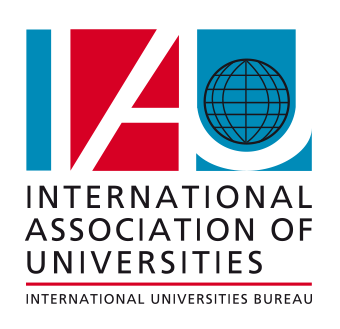Global Academic Research Institute (Pvt) Ltd was founded in 2010 with the purpose of becoming the leading conference organizer in Sri Lanka. We have organized several International Conferences all around the world. Even though we established recently, we were able to come to this position because of the spirit of our GARI conference team members and their creative and innovative ideas.
Conference
Scopes
Date
GARI Conference Blog
1 Why Vi negative isolates of Salmonella enterica serovar Typhi are significantly present in some regions and not in others?
The emergence of Vi negative isolates of Salmonella enterica serovar Typhi (S. Typhi) in recent years has sparked a lot of interest because these isolates have direct implications on future development of typhoid vaccines which currently are almost exclusively Vi polysaccharide based. Initially it was thought that Vi negativity may actually be due to storage under artificial conditions but now it has been shown that Vi negative isolates of S. Typhi exist naturally. However, there is a great discrepancy among reports from different parts of the world regarding their relative frequency (ranging from less than 1% to 25%). In fact, in areas of significant occurrence they are overtaking classical Vi positive isolates with passage of time. Why they are significantly present in some areas but not others? An explanation is required to develop a consensus because there is a danger that the importance of these isolates may get ignored due to contradictory reports.
Vi antigen has been traditionally considered to be the main virulence factor of S. Typhi. Vi expression is regulated in response to environmental signals such as osmolarity by controlling the transcription of tviA in the viaB locus [1].
It has been shown that Vi negative S. Typhi exist naturally [3,4]. In a study from Pakistan, Baker et al [3] reported that 15% of all S. Typhi isolates were Vi negative for both tviA and tviB.
It is well known that Vi capsule is lost during artificial storage. Storage at low temperature enforces conditions of stress in which bacteria can not proliferate, there is minimum supply of nutrients, and they are living in almost zero metabolic state. In such conditions, they shed off the unnecessary package of genes – only those are kept which are essentially required. Vi operon is not essential so it can be easily lost.
So if Vi capsule is absent what about pathogenesis of S. Typhi?
The Vi antigen is not required for invasion of eukaryotic cells. The eukaryotic cell invasion is facilitated by Type IVB pili [5]. The dispensability of Vi capsule is amply demonstrated in S. Paratyphi A which causes a disease similar to S. Typhi but does not possess Vi antigen [6]. In fact, it has been experimentally shown that removal of Vi capsule enhances the invasion of epithelial cells [2].
So it can be said that the Vi negative isolates of S. Typhi have found ways to bypass Vi capsule totally and complete their life cycle successfully. In fact, it has been reported that they are poor formers of biofilm as well [7] which indicates a decreased necessity to produce polysaccharides in general.
It is logical to say that in environment where conditions remain mostly conducive for growth and they do not have to fight a battle for survival, they need not to shed off the excessive baggage. However in harsh conditions they either shed off the non-essential genes or make them dormant.
Now let us consider the various reports regarding occurrence of Vi negative isolates of S. Typhi. These isolates have been reported in significant numbers (8 to 25%) from Faisalabad, Pakistan [3, 8] as well as from Delhi, India [4]. On the other hand, less than 1% presence has been documented form Karachi [9] and Kolkata [10]. The annual temperatures at Faisalabad and Delhi vary from 4 to 41°C. This relatively wide range of temperature which borders on extremes, is usually accompanied by very dry weather for most of the year. It is only for a few months that temperatures and humidity are optimum for bacterial growth. On the other hand, in Karachi and Kolkata where Vi negative S. Typhi isolates are rarely found, the temperature is moderate almost throughout the year (ranging from 19 to 30.5 °C with high humidity because of coastal area). This makes the conditions favorable for bacterial growth and they do not have to face extreme stress conditions.
Another point of great importance is that in the areas where these isolates have been detected in significant number, they are replacing Vi positive isolates over time. In 2000, the % occurrence was 8 [4], which increased to 15 [3] in 2005 and 25 [11] in 2009. It means that these isolates have better adaptability as compared with Vi positive isolates and are increasing their numbers merrily. It is an alarming situation which underlines the need to establish their importance. Efforts should be made to find a substitute of Vi antigen for vaccination. It should be an antigen that is essentially present in all S. Typhi.
REFERENCES
1. Wang JC, Noriega FR, Galen JE, Barry E., Levine MM. Constitutive Expression of the Vi Polysaccharide Capsular Antigen in Attenuated Salmonella enterica Serovar Typhi Oral Vaccine Strain CVD 909. Infect Immun. 2000; 68: 4647–52.
2. Bueno SM, Santiviago CA, Murillo AA, Fuentes JA, Trombert AN, Rodas PI, et al. Precise Excision of the Large Pathogenicity Island, SPI7, in Salmonella enterica Serovar Typhi. J Bacteriol. 2004; 186: 3202–13.
3. Baker S, Sarwar Y, Aziz H, Haque A, Ali A, Dougan G, et.al. Detection of Vi-Negative Salmonella enterica Serovar Typhi in the Peripheral Blood of Patients with Typhoid Fever in the Faisalabad Region of Pakistan. J. Clinc. Microbiol. 2005; 43: 4418–25.
4. Mehta G, Arya SC. Capsular Vi Polysaccharide Antigen in Salmonella enterica Serovar Typhi Isolates. J Clin Microbiol. 2002 March; 40(3): 1127–1128.
5. Lee FK, Morris C, Hackett J. The Salmonella enterica serovar Typhi Vi capsule and self-association pili share controls on expression. FEMS Microbiol Lett. 2006; 261: 41-6.
6. Helena MB, Seth-Smith. SPI-7: Salmonella’s Vi-Encoding Pathogenicity Island. J Infect Develop Count. 2008; 2: 267-71.
7. Haque A. Biofilm is not or poorly produced by Vi negative isolates of S. Typhi. The 7th International Smposium on Invasive Salmonelloses, Kilifi, Kenya, 25-28th Jan. 2009. Proceedings available on www.ivi.org. Accessed 17 March, 2010.
8. Ali A, Haque A, Haque A, Sarwar Y, Mohsin M, Bashir S, et al. Multiplex PCR for differential diagnosis of emerging typhoidal pathogens directly from blood samples. Epidemiol Infect 2009; 137:102-7.
9. Wain J, House D, Zafar A, et al. Vi Antigen Expression in Salmonella enterica Serovar Typhi Clinical Isolates from Pakistan. J Clin Microbiol 2005; 43: 1158–65.
10. Sur D, Ochiai RL, Bhattacharya SK, et.al. A Cluster-Randomized Effectiveness Trial of Vi Typhoid Vaccine in India. N Engl J Med 2009; 361: 335-44.

















